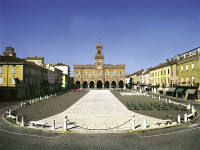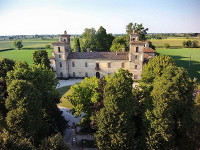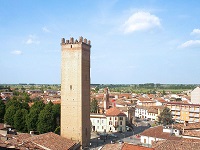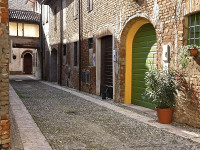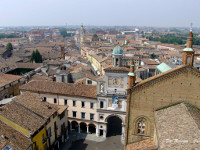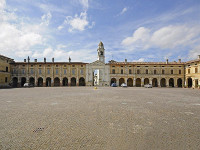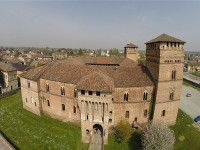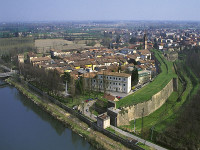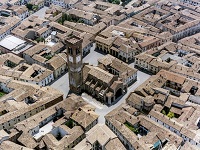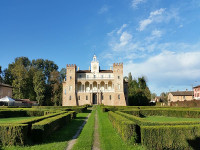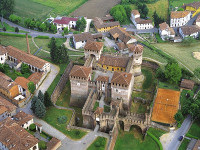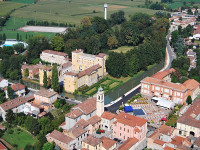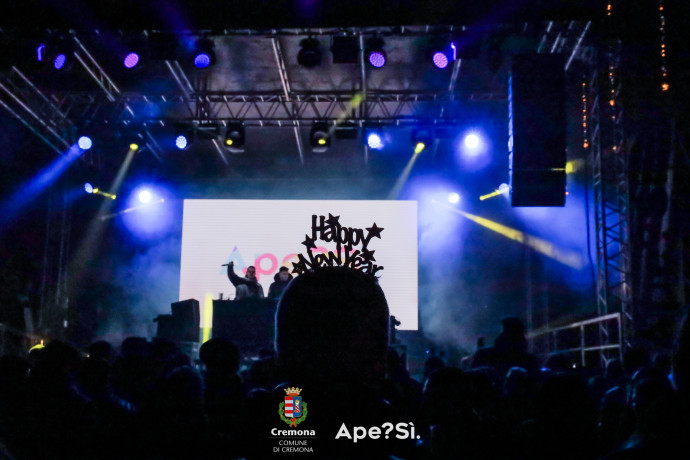- Itinerari
ANCIENT POSTUMIA ROAD
From Cremona to Pieve San Giacomo
The ancient Postumia Road (built in 148 a.c. by the Roman Consul Postumio Albino) connected, in the framework of the Roman “roads”, the town of Genova to the town of Aquileia: it was an important element of connection between the two main harbors of the Northern Italy. The cycling route in Cremona’s territory follows the ancient road and, along it, you can find a little village called Pieve San Giacomo, with the Church San Giacomo Apostolo, Villa Soldi and Villa Gazzolo.
VARIANT 1a - CREMONA’S CASTLES: from Pieve San Giacomo to Cappella Picenardi,Torre Picenardi fino a Isola Dovarese
From Pieve San Giacomo, following a small part of the regional itinerary 10 “Via delle Risaie”, you can reach Torre De’ Picenardi, with its big villa built at the end of the 18th Century by the Picenardi brothers. It is a big architectonic complex surrounded by a ditch and enriched by some wonderful rooms, with an amazing park. It is worth a visit also the building called “il Villino” which is surrounded by an Italian-style garden.
In San Lorenzo De’ Picenardi, you can see the crenelated profile of the Castle, built in the first half of the 19th century by Luigi Voghera on the previous 15th Century building. Isolated in a wonderful park full of flourishing vegetation, this big manor house has six towers and it proposes inside of it a series of rooms characterized by a rich furniture, in line with the style of that age.
The route then touches Isola Dovarese in which the spectacular Matteotti square, planned by Giulio Brunelli in 1587, reflects the typical layout of the ancient parade ground.
Not very far from it, there is the famous San Nicola Church, built in the 18th century on a previous building of the 15th Century. It hosts one “Annunciation” attributed to Altobello Melone and one “Ecce Homo” by Bernardino Campi.
The variant proposes to follow the regional cycling route of the river Oglio till Pessina Cremonese where you can leave it. If you are well-trained you can try to reach Ostiano. Ostiano is a very interesting village, famous for the remains of the Gonzaga castle, the little theater of the 19th century and the Synagogue of the 18th century. In a little village in Pessina Cremonese, called Villarocca, there was in the past the big Villa Fraganeschi which, at the moment, is completely abandoned.
VARIANT 1b - FROM THE ANCIENT POSTUMIA ROAD
TO THE GREAT RIVER: from Pieve San Giacomo to San Daniele Po
The second variant goes towards the river Po. In Cella Dati there is the famous Villa Dati (17th Century), with a big front courtyard. The building is decorated with some important frescoes by G. B. Natali and G. B. Motta. In 1889 the villa was transformed in a Municipality palace but it still contains a collection of still lives by Giovanni Crivelli, called the Crivellino. At the moment it is not possible to visit it. In the surrounding countryside there are several interesting buildings, like Villa Campagna and Villa Torretta which are located in the rural context and which represent the ancient rural tradition of these areas and remind us of the feudalism.
The facade of villa Torretta presents a doorway with a little balcony in wrought iron. More information about San Daniele Po are available in route number 4.
Mostra cosa c'è nelle vicinanze:
